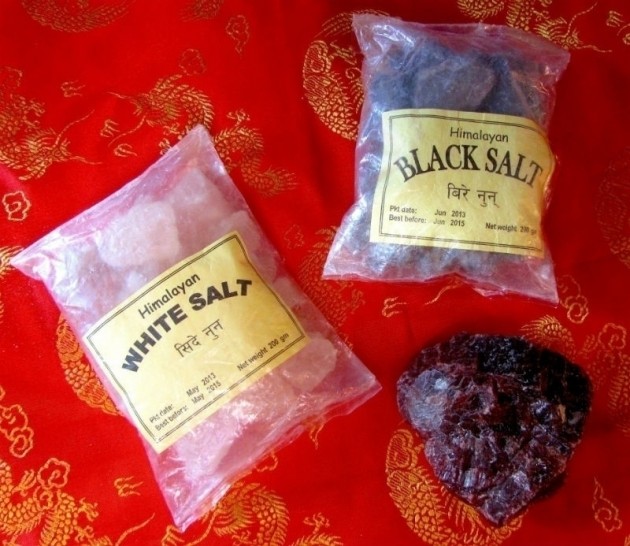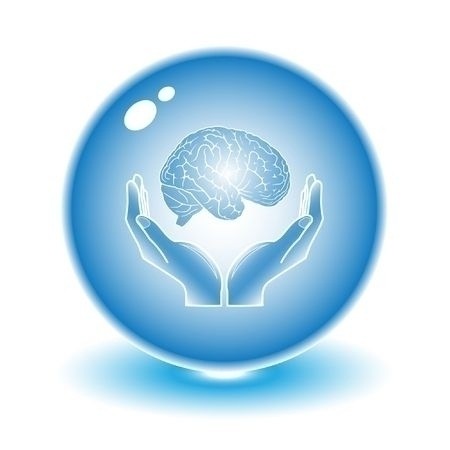Ulcers (duodenal and gastric), H. Pylori
Your digestive system produces strong acids and juices that are designed to help break down the food you eat so that its components can be used to nourish the body. The lining of the healthy stomach is marvelously resistant to these juices and is not affected by their caustic nature. In ulcer patients, this defense of the stomach's lining against stomach acids has broken down somehow, so that...
Tendinitis
Inflammation of the tendon and the lining of the tendon sheath. The sheath is typically the focus of the involvement, but the body's inflammatory response usually involves the tendon, too. The etiology is unknown, although repetitive or forceful trauma, exercise or strain, systemic diseases (rheumatoid arthritis, gout, Reiter's syndrome) and hypercholesterolemia are implicated.
What We SHOULD Eat
1. Nutrient-Dense Leafy Greens - daily, unlimited amounts! The more the better! One or two types at any time. Explore the many kinds. Try kale, mustard greens, collards, dandelion greens, arugula, beet greens, parsley, cilantro, spinach, swiss chard, endive, green and red lettuce, turnip greens, lamb’s lettuce, watercress, fresh herbs, etc…...
Surgery and Supplements
QUESTION: My cousin faces the legs surgery due to arthritis problem (a cartridge worn out and the bones rubbing each other causing pain) Is it possible to avoid this surgery and take care of problem using the supplementals and vitamins? Thank you, Gregory
Why Eat Raw Organic Plant Food?
What would you give for fewer colds/allergies, more energy, a slender body, a sharper mind, clear skin, better digestion, and slashed risk of heart disease, stroke, cancer, diabetes, arthritis, osteoporosis, gallstones, infections, and premature death? No drug or surgery or supplement can give you all these. But a natural diet and lifestyle can.
Reducing Cholesterol Naturally
Question: I have been told that I have a total cholesterol of 278/HDL of 60. My doctor put me on a statin which was not good for my liver. He then put me on another statin which caused muscle aches, nausea, and lethargy. What can I do that will be more natural but get my cholesterol down?
Reducing Cholesterol Naturally
Question: I have been told that I have a total cholesterol of 278/HDL of 60. My doctor put me on a statin which was not good for my liver. He then put me on another statin which caused muscle aches, nausea, and lethargy. What can I do that will be more natural but get my cholesterol down?
Alzheimer's Disease
Adapted from the book "BrainRecovery.com" by David Perlmutter, MD Board-Certified Neurologist At present, approximately 4.5 million Americans have Alzheimer's disease. By the year 2030, it has been estimated that this number will approach 9 million. Prevalence of Alzheimer's disease has been estimated to be 50% in individuals 85 years or older-the most rapidly growing segment of...
Angina Pectoris
Angina Pectoris is defined as Acute pain in the chest resulting from decreased blood supply to the heart muscle (myocardial ischemia). A syndrome due to myocardial oxygen deficit, characterized by prolonged substernal, thoracic pain which is precipitated chiefly by emotion, exercise, or the ingestion of a heavy meal. It is caused by a temporary inability of the...
Autoimmune Conditions
Examples of autoimmune conditions include the following: Rheumatoid arthritis (RA) Type 1 diabetes Crohn's Disease Hashimoto's thyroiditis Neurological diseases Multiple Sclerosis (MS) Glomerulanephritis Pernicious Anaemia Goodpasture's syndrome Scleroderma Raynaud's Phenomenon Lupus (e.g., systemic lupus erythematosus [SLE]) Inflammatory bowel disease (IBD)...
Blood Interpretation
Cholesterol Cholesterol values should only be analyzed after a 12 hour fast. Further, the physician must be aware that the patient's posture prior to the blood draw is significant. If the patient has been in a recumbent posture for more than 20 minutes, cholesterol values may be up to 15% lower than normal. Cholesterol is a blood fat which is the prime building block component to make...
Blood Sugar Dysregulation / Metabolic Syndrome
General nutritional support strategies for individuals with any dysglycemic response. i.e. Metabolic Syndrome (lnsulin Resistance and Hyperinsulinemia) Type II Diabetes Reactive Hypoglycemia. NOTE: "Type 1 Diabetes" see Autoimmune Section
Trace Mineral Drops
ConcenTrace® Trace Mineral Drops concen-trace-mineralsThe Most Powerful, Natural, Health Giving Trace Minerals in the World. Formulated by Nature for Greater Bio Health and Body Mineral Balancing. From Utah's Inland Sea Soluble · Liquid · Ionic
Cardiovascular Disease
Definitions of Cardiovascular Disease Risk Factors Total cholesterol Cholesterol is a waxy fat like substance. Total cholesterol refers to the sum of the different sub-fractions of cholesterol that are measured in the blood. Total cholesterol is an independent risk factor for cardiovascular disease. The National Cholesterol Education Program says 240 is considered high. A person with this level...
Common Cold
The common cold is an upper respiratory infection caused by a virus. In the United States, adults have between 3 and 6 colds a year, and children have as many as 8 to 10.
Depression
Depression is a major problem in the United States. Nearly 15 million Americans will suffer true clinical depression each year. Depression is also a big business for drug companies, especially for the maker of Prozac-Eli Lilly and Company. The good news is that there are natural measures to deal with depression that are both safer and more effective.
Detoxification
Low-level, long-term exposure to toxins such as heavy metals (e.g. lead, mercury, PSP, and cadmium), pesticides, industrial compounds, and pollutants is associated with chronic fatigue syndrome (CFS), multiple chemical sensitivities (MCS), fibromyalgia (FM), neurodegenerative diseases such as Parkinson's disease and atherosclerosis as well as many types of cancers. Common signs and...
Ear Dysfunction - Meniere's Syndrome / Tinnitus
The disease was first diagnosed in 1861 by Prosper Meniere. Meniere's syndrome is an illness that afflicts more than seven million Americans, according to the Journal of American Medical Association (July 25, 1990). It is generally believed to be caused by a buildup of fluid in the inner ear. The resulting pressure can manifest the following list of symptoms: ringing or buzzing in the ears...
Eye Conditions
Cataracts Cataracts are clumps of protein that collect on the lens of an eye and interfere with vision. Normally, light passes through the lens (the clear tissue behind the pupil) and focuses on the retina. The retina is the light-sensitive layer of the eye that sends visual signals to the brain. A cataract occurs when the normally clear lens becomes cloudy. Most cataracts develop slowly...
Female Conditions
Amenorrhea Absence of menstruation. Amenorrhea may be primary (the girl has never begun her periods) or secondary (the woman had her periods once and then stopped having them). Physiologic amenorrhea is the lack of menses before menarche, during pregnancy and early lactation, and after menopause (all considered normal). All other causes of amenorrhea are pathologic. Causes of Primary...
Fertility / Sexual Dysfunction - Male and Female
10-15% of couples experience the inability to conceive, and the percentage is growing. Men account for 40% of failures to conceive. Of the women who are responsible, failure to ovulate accounts for 30% of infertility problems; pelvic factors (such as tubal disease and endometriosis) account for 50%; cervical pathology is responsible 10% of the time; and in 10-20% of the women no reason is...
Fibromyalgia
Adapted from "Nutritional Therapies for Fibromyalgia Syndrome", written by Kristi Hughes, ND Fibromyalgia is a syndrome characterized by generalized musculoskeletal pain and stiffness, chronic aching, fatigue, and multiple areas of local tenderness that can be identified during physical examination. Research studies suggest that fibromyalgia pain may be the result of a...
Fracture
Any break in a bone. There are many types of fractures:
Glossitis and Tongue Related Conditions
An acute or chronic inflammation of the tongue. Glossitis may be either a primary or secondary manifestation of disease. Systemic disorders that may cause the problem include: vitamin deficiency (esp. B vitamins), anemia (pernicious or iron deficiency) and a multitude of skin diseases (aphthous lesions, pemphigus, erythema multiform, lichen planus, etc.). Local problems that may give rise to...
Headache: Nonvascular
Headache without vascular cause. The most commonly diagnosed condition in the United States with 70% of these caused by muscle tension. Causes include suboccipital muscle spasms from injury (whiplash), postural strain (caused, for example, by a computer screen angled incorrectly), pillow too large that forces flexion of the neck during rest. Usually gradual onset, but tends to persist in cyclical...
Inflammatory Bowel Disease (IBD)
Crohn's Disease, Ulcerative Colitis, Irritable Bowel Syndrome, and Celiac Disease
Influenza
Influenza, or "flu," is a common infection caused by a virus affecting the respiratory tract (like the nose and upper airways). Its symptoms are usually more severe than the common cold and are more likely to affect other parts of your body like your stomach and muscles. The flu is very contagious - spreading easily from one person to the next. While most cases run their course in...
Liver / Gallbladder
Hepatopathy: any disease of the liver. Hepatotoxin: a toxin that destroys liver cells. Cholestasis: stoppage or suppression of bile flow, due to factors within (intrahepatic cholestasis) or outside the liver (extrahepatic cholestasis). Cirrhosis: a liver disease characterized pathologically by the loss of the normal microscopic lobular architecture and regenerative...
Macular Degeneration
Macular degeneration is a painless, degenerative eye disease that affects more than 10 million Americans. It is the leading cause of legal blindness in persons over the age of 55 in the United States. While complete blindness does not occur in most people with the disorder, macular degeneration often interferes with reading, driving, or performing other daily activities. There are two forms of...
Memory Loss / Cognitive Function Decline
Persons over 65 years old now comprise 12-15% of the U.S. population. Memory loss is one of the most common symptoms
Neurological Conditions
Neurological Conditions The Interplay of Neurotransmitters & Mental States The body is the theater for emotional and cognitive states. Whether mood or mental issues express themselves through behavior or physical functioning-neurotransmitters are one group of characters at play. Memory and cognitive processes are heavily dependent on acetylcholine, a neurotransmitter...
Osteoporosis
A decreased density of bone compared to normal bone mass of age and sex matched controls. It is the most prevalent bone disease in the world. There are many factors that can contribute to osteoporosis, the most common is postmenopausal, estrogen deficient osteoporosis. More than one-half of women in the United States who are 50 years of age or older will have documented osteoporosis,...
Parkinson's Disease
A chronic progressive CNS disorder characterized by slowness of purposeful movement, resting tremors, and muscle rigidity. Also called "Parkinsonism" and "Paralysis Agitans" Dorland's Medical Dictionary describes the Parkinsonian complex as "neurologic disorders characterized by hypokinesia, tremors and muscular rigidity. It typically occurs late in life,...
Periodontal Disease
Gingivitis, Periodontitis, and Scorbutic Gums Periodontal disease is a scourge on our society. It accounts for more lost teeth in adulthood than any other dental problem. Gum disease will affect nine out of ten Americans, and one out of every four persons will lose all their teeth to periodontal disease by age 60. Thirty-two million Americans have gum disease right now in such an advanced state...
Polymyalgia Rheumatica
What is polymyalgia rheumatica? Polymyalgia rheumatica (pronounced pah-lee-my-al-jah room-at-i-ca) is a type of arthritis that affects the muscles. It does not affect the bones, or the joints, which are the spots where two bones come together. It causes muscles to become stiff, tender and very sore. This is called inflammation. Even though the muscles are sore they do not become weak.
Restless Legs Syndrome and Leg Cramps
Leg Cramps: Nocturnal leg cramps constitute a relatively common complaint in the general practice of medicine and may be very distressing to the patient. Not only is the cause obscure and the treatment relatively unsatisfactory, but even its proper medical name, systremma (anything twisted up together), is unknown to most physicians.
Rheumatoid Arthritis
The Natural Approach Rheumatoid arthritis is a chronic inflammatory condition that affects the entire body but especially the synovial membranes of the joints. It is a classic example of an "autoimmune disease," a condition in which the body's immune system attacks the body's own tissue. Although rheumatoid arthritis is a systemic disease, it affects primarily the joints. The...
Sciatica
A specific entity with many causes. Involves inflammation of the great sciatic nerve and presents as acute or chronic pain down the back of the leg originating in the buttock and extending to the foot. Pressure can originate in the nerve roots, as in discopathy or facet syndrome, or can be caused by the gluteal muscles or piriformis tightening over the nerve. Gluteal muscle spasm is often...
Skin Conditions
Acne Vulgaris An inflammatory disease most commonly seen in teenagers. It affects areas where sebaceous glands are largest, most numerous, and most active. Mild cases consisting of few residual signs except possibly dilated pores, and the development of the comedo, or blackhead, may progress through more pathological stages of ruptured sebaceous ducts, pustule formation,...
Stress
The many faces of stress Stress manifests differently depending on the individual, influencing many biological processes that begin in the brain and spread through nearly all body systems - including the adrenals, thyroid, neurotransmitter systems, digestive system, and heart. Consistent stress over long periods of time can become a serious threat to maintaining lifelong wellness as so much energy...
Calorie Density to Prevent Cancer
If you do not use tobacco then the most important thing you can do to prevent cancer is eat well, maintain a healthy body weight, and get physical exercise. Unfortunately when surveyed less than 3% of the population eats a health promoting diet that meets the guidelines for cancer prevention and over 68% of the population is overweight or obese. Following the principles of calorie density will...
Cancer
What are the nutritional strategies in treatment of cancer? Here is your guide to enhancing the immune / antioxidant status, enzyme therapy, chemotherapy and / or radiation therapy support and suggested nutritional supplementation.








